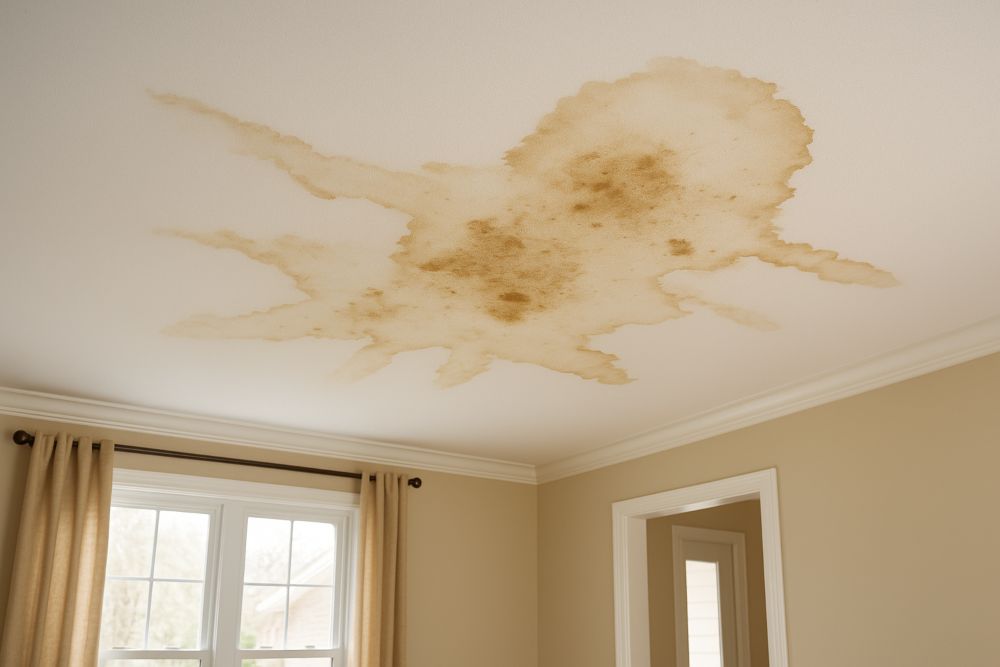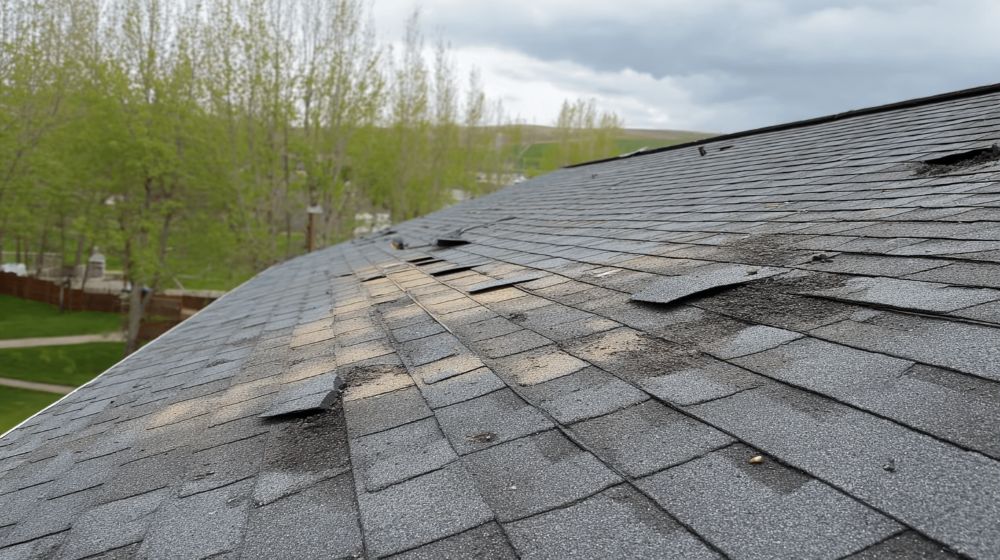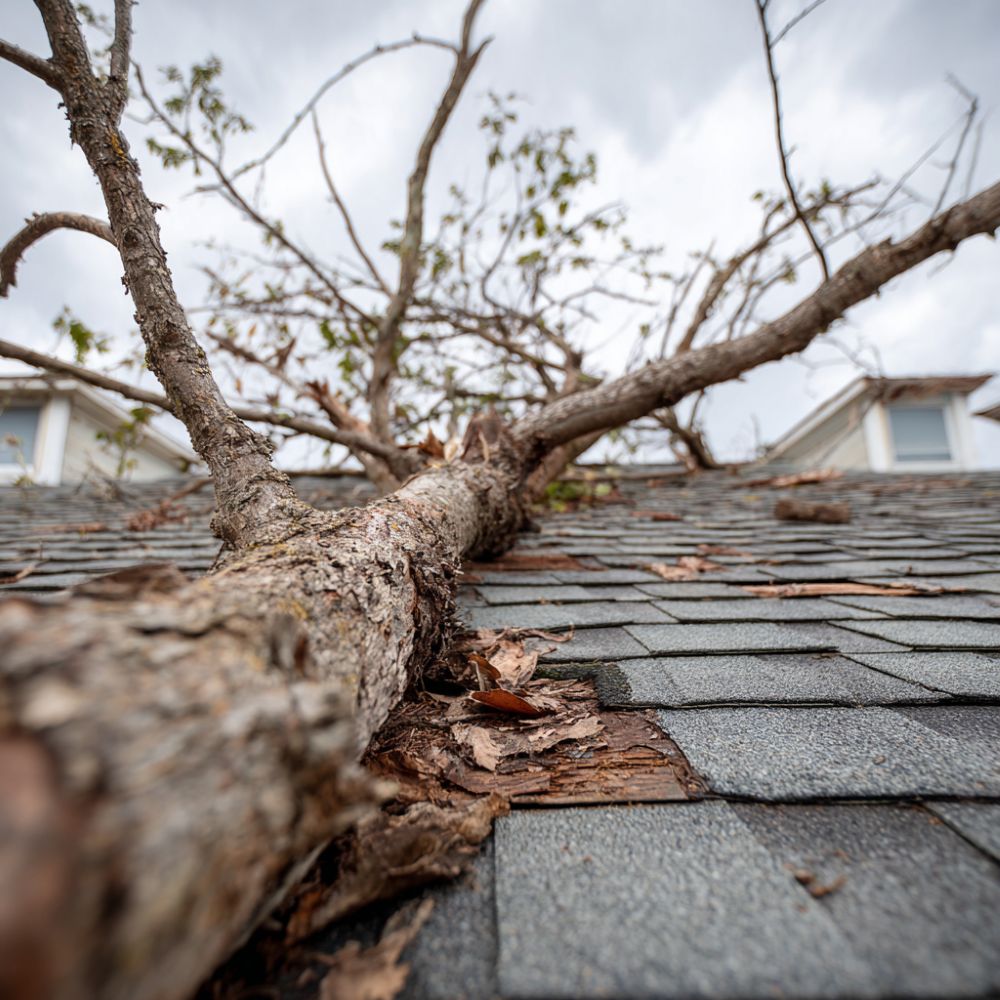
Storms can leave behind more than puddles and fallen branches. High winds, heavy rain, hail, and flying debris can quietly damage your roof, leading to leaks and costly repairs if not caught early. Knowing how to safely inspect your roof after a storm can help you spot problems, protect your home, and decide whether to call a professional.
Signs of Storm Damage You Should Look For

When you’re checking your roof after a storm, start by looking for visible signs that something may be wrong. You don’t always need to climb on the roof; a good inspection can begin from the ground and inside your home.
Some things to watch for include:
- Missing, cracked, or curled shingles
- Dark spots or bruises on shingles (often caused by hail)
- Pieces of shingles or roofing materials on the ground
- Bent or broken flashing around chimneys and vents
- Damaged or overflowing gutters filled with debris
Inside your home, check for water stains on ceilings or walls. A damp attic or musty smell can also mean your roof has sprung a leak.
How to Inspect Your Roof Safely
Climbing on your roof can be dangerous, especially after a storm. Instead, start with a visual inspection from the ground using binoculars. Walk around your house and scan for anything out of place. If you feel it’s unsafe or notice major damage, call a professional roofer right away.
If you do go up, take safety seriously: use a sturdy ladder, wear slip-resistant shoes, and avoid walking on wet or icy shingles. Never climb up alone.
What Different Types of Storm Damage Look Like
Storms affect roofs in different ways depending on the weather. Here’s how to spot the most common types:
Wind damage: Shingles may be lifted, missing, or flapping in the wind.

Hail damage: Small dents, cracks, or dark circular spots on shingles.
Heavy rain: Pooling water on flat roofs or clogged gutters.
Falling branches or debris: Visible punctures, broken shingles, or holes in the roof.

When to Call Your Insurance Company
If you notice more than just a loose shingle or two, it’s smart to contact your insurance company quickly. They may send out an adjuster to inspect the damage. Take clear photos and videos of everything you see — inside and outside your home. This documentation will help your claim go smoothly.
It’s often a good idea to have a roofing contractor inspect the roof before the adjuster comes. That way, you’ll know what damage to point out and whether it should be covered.
Repair or Replace?
Homeowners often wonder how much damage justifies a repair versus a full replacement. Small issues, like a few missing shingles or minor flashing damage, can usually be fixed. But if large sections of shingles are gone, or if water has leaked into your home, you may need a more significant repair or even a replacement. A professional roofer can give you an honest assessment.
Can You Inspect the Roof Yourself?
Yes, you can do a basic inspection yourself. From the ground, use binoculars to look closely at the shingles. Check your attic and ceilings for leaks. However, only a trained roofer will be able to spot hidden problems, such as damaged underlayment or subtle hail bruises.
Hiring a professional roof inspection usually costs less than most homeowners expect, and it can save you thousands by catching issues early.
How Quickly Should You Inspect After a Storm?
The sooner, the better. Inspect your roof as soon as the weather clears and it’s safe to go outside. Delaying could allow water to seep in and cause further damage. Insurance companies also prefer claims filed promptly after a storm.
Preventing Future Storm Damage
While no roof is storm-proof, regular maintenance helps reduce the risk. Trim back overhanging tree branches, keep gutters clear, and schedule a professional inspection at least once a year. When replacing your roof, consider durable materials like impact-resistant shingles or metal roofing, which often withstand storms better.
Final Thoughts
Inspecting your roof after a storm doesn’t have to be complicated, but it does need to be done carefully. Start from the ground, look for obvious signs, and check inside your home for water damage. Document what you see, and don’t hesitate to involve your insurance company and a trusted roofer if you suspect major problems.
By acting quickly and knowing what to look for, you can prevent small issues from turning into costly repairs — and keep your home safe through every season.